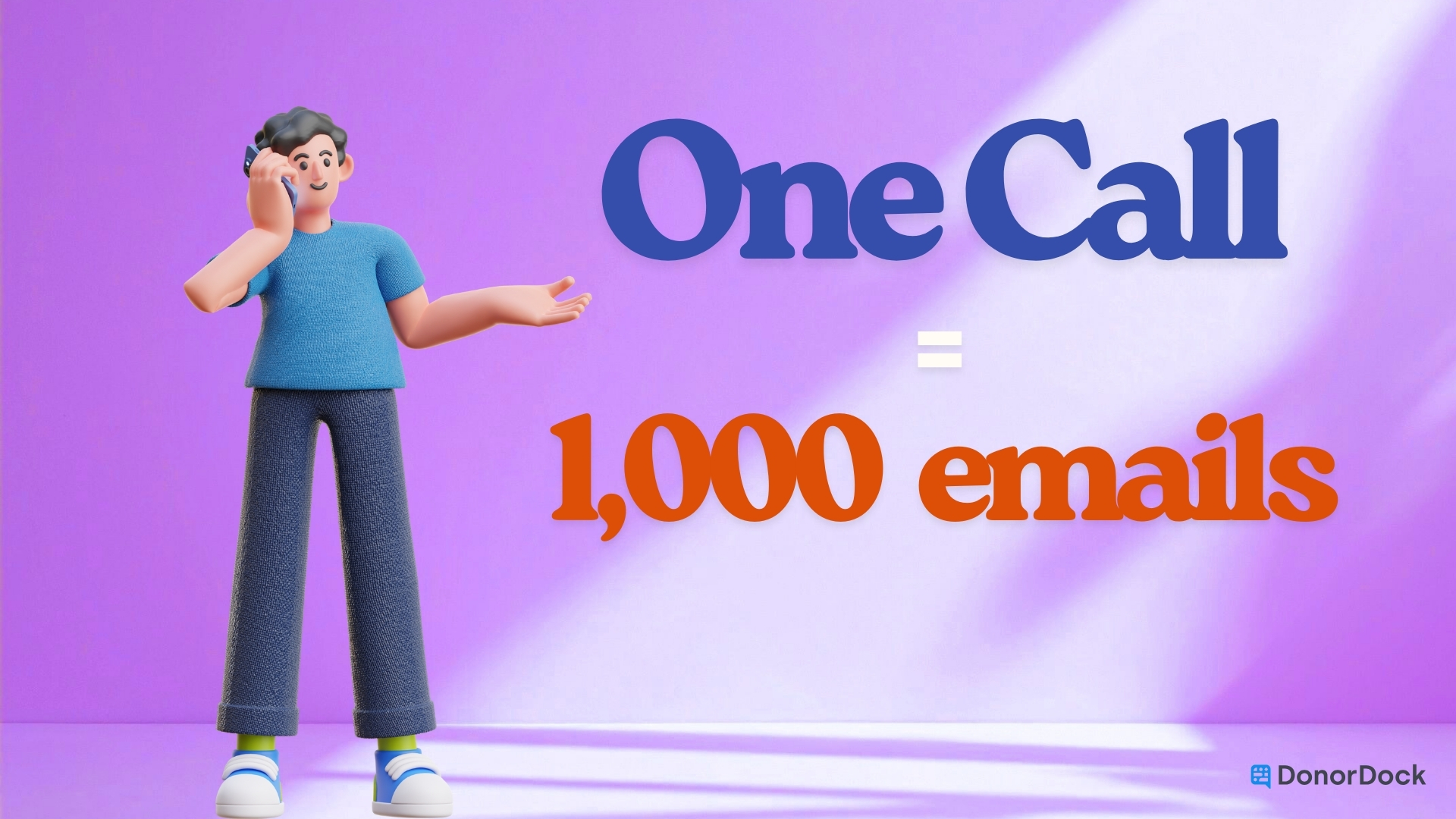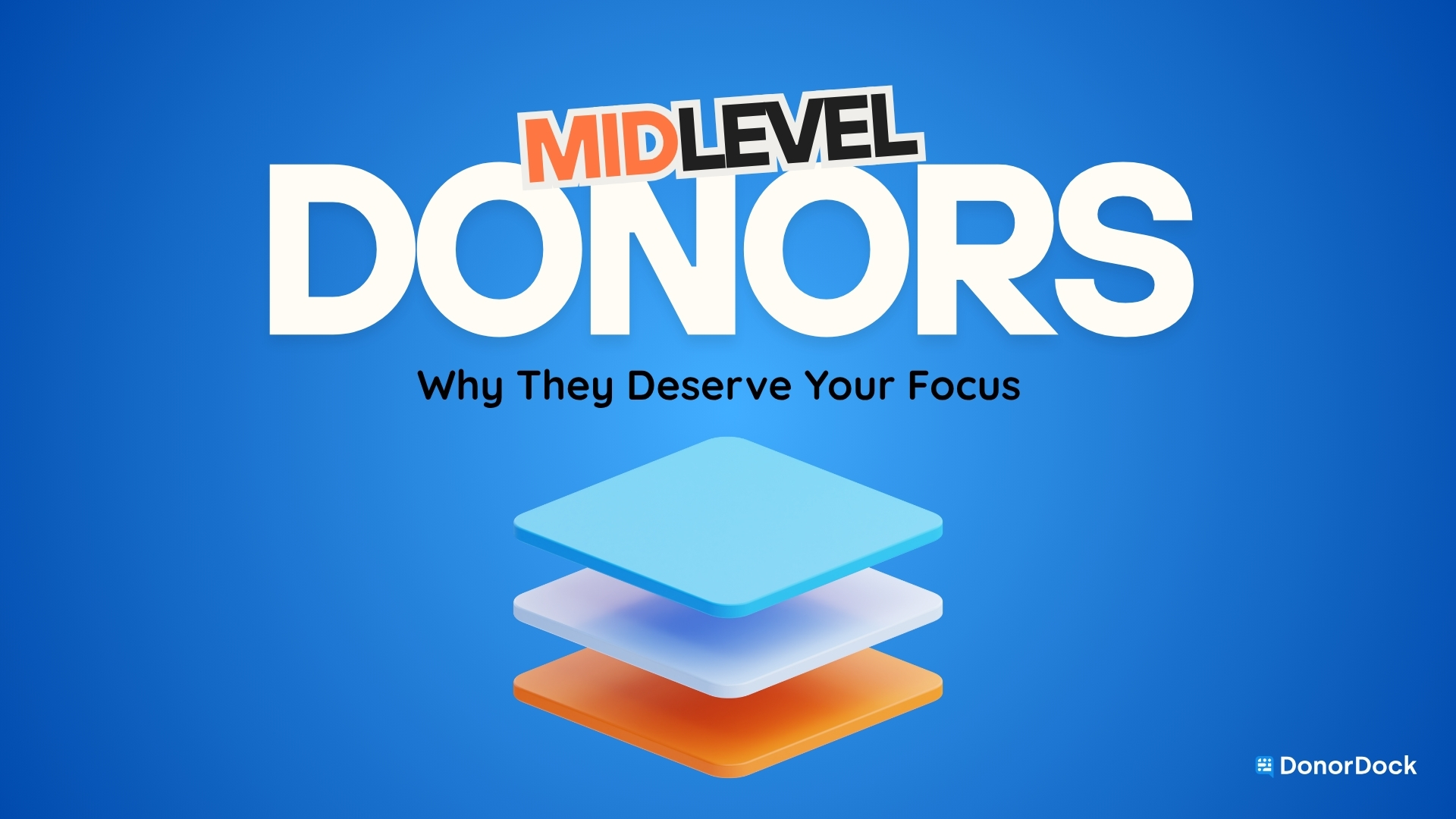Picture this: you make a gift to a cause you care about. A few days later, your phone rings. On the other end is a staff member—maybe even the executive director—simply saying, “We’re so grateful for your support.” No script, no ask, just gratitude.
That one moment is powerful enough to cement loyalty in a way no email drip campaign ever could. For small nonprofits, where capacity is tight, leaning into the thank-you call (and other personal touches) is one of the smartest, highest-ROI moves you can make.
Why calls outperform inboxes
A thank-you call carries a kind of intimacy that digital touches can’t replicate. When the phone rings and a donor hears a real voice on the other end, the moment feels spontaneous and personal in a way email never will. It’s live, unscripted, and rooted in genuine human connection.
That simple act of pausing to say, “We noticed you, and we’re grateful,” turns a transaction into a relationship.
For many supporters, that unexpected voice on the line becomes the story they retell, the moment they felt truly seen by your organization.
- The retention effect is real. Donors are more likely to give again if they receive a thank-you within 48 hours. A quick call often does the job better than anything else, but even an automated thank you email is better than nothing.
- Direct channels still deliver. Traditional outreach methods like mail and phone consistently bring higher response rates than email. Direct mail earned a 112% ROI. Pairing that tangibility with a follow-up call doubles the impression.
- Email isn’t dead, but it’s crowded. Nonprofits send an average of 62 emails per subscriber per year. A thank-you call cuts through the noise by surprising the donor with a live moment of connection.
- ROI stays undeniable. For the individual donor, one call can be the difference between a one-time gift and a lifetime relationship.
Donors want to feel like more than a line item. A thank-you call is proof they’re seen.
How small teams can make thank-you calls sustainable
You don’t need to call everyone. You just need a rhythm that keeps calls meaningful and doable.
Start small. Pick 5–10 donors a month: first-time givers, recurring donors hitting milestones, or anyone who gave above your average gift.
Block time. Reserve 30 minutes each week. A handful of short calls beats one exhausting marathon session.
Keep it under two minutes. A quick “thank you, here’s one impact detail, we appreciate you” is plenty. No pitch. No awkwardness.
Share the load. Rotate callers: staff, board members, or even program beneficiaries (with consent). This spreads ownership and lets donors hear diverse voices from your mission.
Use prompts, not scripts. Equip callers with a few talking points: donor’s name, gift amount, and one recent outcome. Authenticity wins over polish.
If you want to keep track of who’s been thanked, DonorDock’s Relationship Loop framework makes it easy to plan gratitude as part of your stewardship cycle.
Other personal touches that echo the thank-you call
Not every donor prefers the phone. You can weave in other small gestures that carry the same relational weight:
- Handwritten notes. A short “because of you” card can linger on a fridge for months.
- Voice notes. Record a quick message on your phone and email the audio file. It’s the digital cousin of a thank-you call.
- Hybrid outreach. Send a printed photo or postcard and follow up with a personal email that references it: “Hope you saw the postcard on your fridge, we thought of you when we printed it.”
- Personalized emails. Even in Gmail, adding a first name and referencing the last gift makes an email feel like a note rather than a broadcast. Donors are 71% more engaged when messages are personalized.
A rhythm that actually fits your week
Instead of overwhelming yourself by trying to plan out an entire year of stewardship in one sitting, shift your mindset to smaller, bite-sized loops. Think of your donor communication like a monthly rhythm rather than a marathon calendar. By breaking it down this way, the task suddenly feels doable—you don’t have to figure out 52 weeks at once. You just need to decide how you’ll show gratitude and share impact over the next four weeks. In one month, for example, you could…
- Week 1: Call five new donors to say thank you.
- Week 2: Mail three handwritten notes to recurring donors.
- Week 3: Record a voice note update for a major supporter.
- Week 4: Send a personalized email to first-time donors.
That’s fewer than a dozen actions. Each one under 20 minutes. Together, they create a drumbeat of trust.
For tools to automate the reminders while keeping the touch personal, explore DonorDock’s automated donor journey resources.
What to measure so you know it’s worth it
- Second-gift rate. Calls lift the odds of a repeat gift within 90 days.
- Reply rate. A returned voicemail, an email reply, or a donor saying “thanks for the call” are leading indicators of engagement.
- Retention among first-time donors. Track those you called vs. those you didn’t. Even a small bump is proof of impact.
- Time invested. Keep calls under two minutes and total effort under 30 minutes a week.
The math is simple: five short calls can add up to thousands in retained revenue over the course of a year.
Conclusion
Your donors don’t need elaborate annual reports or a steady drip of generic emails to feel connected. What they really need is reassurance that their gift was seen, valued, and put to work. A single thank-you call does exactly that. It communicates presence, gratitude, and trust in a way that no campaign dashboard can capture. And here’s the remarkable part: that two-minute call often delivers more long-term return than months of scheduled appeals, because it speaks to the heart of why people give in the first place, they want to know they matter.
When you lead with simple, personal gratitude, you create a ripple that strengthens loyalty far beyond the initial gift.
If you’re ready to systemize gratitude without losing the human touch, start with DonorDock’s guides on donor stewardship and donor retention. They’ll help you keep relationships strong while cutting through the noise.
Want to put more thank-yous on autopilot? Start building meaningful donor relationships today with Otto's help. Schedule a Demo.












